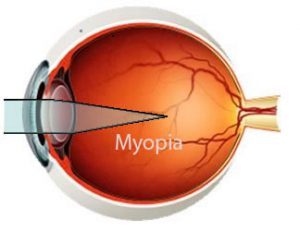- Home
- Editorial
- News
- Practice Guidelines
- Anesthesiology Guidelines
- Cancer Guidelines
- Cardiac Sciences Guidelines
- Critical Care Guidelines
- Dentistry Guidelines
- Dermatology Guidelines
- Diabetes and Endo Guidelines
- Diagnostics Guidelines
- ENT Guidelines
- Featured Practice Guidelines
- Gastroenterology Guidelines
- Geriatrics Guidelines
- Medicine Guidelines
- Nephrology Guidelines
- Neurosciences Guidelines
- Obs and Gynae Guidelines
- Ophthalmology Guidelines
- Orthopaedics Guidelines
- Paediatrics Guidelines
- Psychiatry Guidelines
- Pulmonology Guidelines
- Radiology Guidelines
- Surgery Guidelines
- Urology Guidelines
Period of Education Causal risk factor for Myopia : BMJ

More time spent in education is a causal risk factor for myopia, says recent study published in The BMJ. Myopia or short-sightedness is one of the leading causes of visual disability worldwide, and its prevalence is increasing rapidly. It is a refractive defect of the eye that causes light to focus in front of the retina, usually because the axial length of the eye is too long. As a result, distant objects appear blurred and close objects appear clearly (short-sight)
Edward Mountjoy and his associates conducted a study to determine whether more years spent in education is a causal risk factor for myopia, or whether myopia is a causal risk factor for more years in education.
A total of 67 798 men and women were included in the bidirectional, two sample mendelian randomization study. Mendelian randomization is a type of instrumental variable analysis that uses genetic variants associated with a risk factor (eg, education) as proxies for an environmental exposure to make causal inferences about the effect of the exposure on the outcome of interest (eg, myopia).
Mendelian randomization analyses were performed in two directions: the first exposure was the genetic predisposition to myopia and the outcome was years in education and the second exposure was the genetic predisposition to higher levels of education, and the outcome was a refractive error.
Key findings of the study:
- Every additional year of education was associated with a more myopic refractive error of −0.18 dioptres/y
- Mendelian randomization analyses suggested the true causal effect was even stronger: −0.27 dioptres/y
- By contrast, there was little evidence to suggest myopia affected education (years in education per dioptre of refractive error −0.008 y/dioptre
Thus, the cumulative effect of more years in education on refractive error means that a student with 17 years of education would, on average, be at least −1 dioptre more myopic than someone who left school at age 16 (with 12 years of education). The myopia of this magnitude would be sufficient to necessitate the use of glasses for driving.
The study concluded that exposure to more years in education may increase the prevalence of myopia and potential future visual disability.
For more reference log on to https://doi.org/10.1136/bmj.k2022

Disclaimer: This site is primarily intended for healthcare professionals. Any content/information on this website does not replace the advice of medical and/or health professionals and should not be construed as medical/diagnostic advice/endorsement or prescription. Use of this site is subject to our terms of use, privacy policy, advertisement policy. © 2020 Minerva Medical Treatment Pvt Ltd